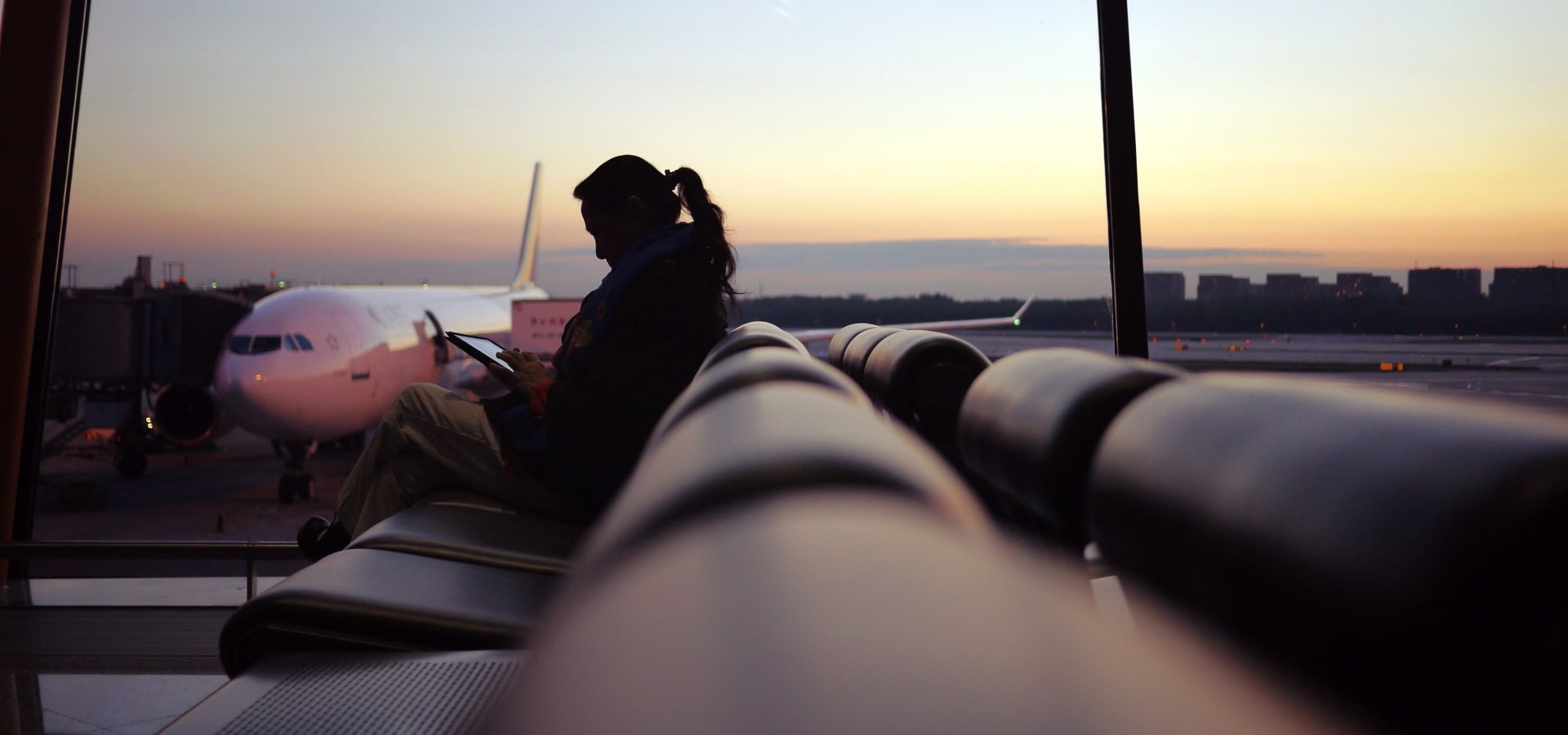Airports
Meet infrastructure requirements and delight air travelers.
What are the Trends Changing the Airports Landscape?
Airports play a crucial role in the global air transportation network, connecting millions of passengers and tons of freight to their destinations each year. Let's explore the trends and innovations shaping the future of airports. What are they and how will they affect your business?
- Airport Experience
- Operational Blueprint
- Growing Traffic
- Infrastructure & Maintenance
- Operation Agility
How Smart Airports Are Transforming the Future of Passenger Experiences
The aviation industry is soaring to new heights, and airports have an exciting opportunity to embrace the challenges of this evolution.
Airport Experience
How do you improve airport retail experience?
Airports are challenged to create new ways to engage consumers and appeal to their uniqueness. In a world where interactive and virtual reality experiences are the norm, airports would be remiss if they fail to provide consumers a highly realistic immersive shopping environment. By providing this type of experience, airports can deliver a powerful and lasting impression.
According to Nigel Dolby Consulting, missed opportunities in airport shopping and dining could result in up to $35 billion worth of lost sales a year.
Maximizing the media mix to reach the maximum number of consumers can help address this. Airports must ensure they provide consistent branding and messaging throughout the passenger journey.
Vertiport Concept of Operations
Advanced Air Mobility (AAM) promises to completely change the way we fly by making it faster, safer and more accessible.
Operational Blueprint
How do you improve operation efficiency?
An Operational Blueprint/CONOPS is essential in AAM because it defines safe airspace corridors and vertiport operations, aligns public and private stakeholders, embeds real‑time monitoring and automation for safety, and lays out scalable infrastructure plans—together enabling efficient, sustainable expansion of AAM services.
For airport it empowers airport operator to enhance coordination, improve efficiency, optimize infrastructure usage, and align operations with safety and sustainability goals—building resilience and boosting performance.
Transforming Airports Today for Tomorrow’s Demand
The aviation industry is transforming significantly, driven by increasing demand, rapidly advancing technology, and capacity constraints.
Growing Traffic
How do you manage airport traffic growing faster than infrastructure can keep pace?
Passenger and cargo air traffic are estimated to grow substantially through 2037. Air traffic infrastructure will follow suit and is expected to grow and modernize to meet airline and passenger demand. Is airport infrastructure able to meet this congestion of people and aircraft?
Adding new terminals and airport infrastructure takes years of planning and construction, so airports require a plan to manage this increase in traffic in the meantime. Technology enables airport operators to find new ways to support expected growth to meet passenger and cargo traffic. And, an improved passenger experience is a hallmark marketing strategy of the airports of tomorrow. Busy markets with multiple airports have the most to gain by appealing to the airlines customer.
Forward-looking facilities like the world’s busiest airport, Hartsfield-Jackson Atlanta International, exploit digital technologies to enhance the end-to-end travel experience.
Virtual Twin Experiences are transforming how facilities are designed, operated, and maintained. Using the virtual twin experience in airport facility management is estimated to generate significant maintenance cost reduction.
Airport Digital Twin - DELMIA Virtual Twin Experience
Aviation professionals face an unprecedented and unexpected challenge.
Infrastructure & Maintenance
How do you optimize airport infrastructure and maintenance capabilities?
Most airport infrastructures are aging and have struggled with the boom of traffic around the world. According to IATA analysts, airlines, passengers and cargo need safe, functional and affordable airport infrastructure for their operations to thrive. Global airport infrastructure development is expecting to represent a US$1.2-1.5 trillion spending by 2030.
To do maintenance properly, they need to identify failure cause–effect, recognize when maintenance levels are beginning to deteriorate, make informed short and long-term decisions about maintenance and be knowledgeable about repair techniques. They also need to be able to address special considerations related to their airport's operating environment.
The operations and maintenance divisions must execute tasks round the clock, and as both divisions’ tasks are interdependent, it is imperative that team members can effectively work together towards common goals. As most tangible assets are spread across different environments, the airports must actively monitor these assets to maintain them at an optimal level of use and ultimately enhance the passenger experience
Transform Airport Operations with Virtual Twin Technology
Building the airport of the future with today's solutions is a real challenge. Discover how to transform airport challenges into opportunities by leveraging virtual twin technology.
Operation Agility
How do you improve operation agility?
Airports are facing significant air traffic increase. It is crucial for airports to guarantee smooth airport operations without additional delays. As a result, airports must optimize their operations and flexibility is becoming key in order to adapt faster to unexpected situations. We could overcome this business downturn with a strong collaboration between all airport stakeholders. They must come together to meet these unprecedented challenges. Quick decision making and stakeholder collaboration are becoming crucial factors for effective change. Airports need greater flexibility to adapt to emerging new regulations.
Looking to the future, airports must assess their overall experience and rethink their operational models to keep costs down. Airport executives require a holistic view on how specific adjustments decided in operations will affect the entire airport. These adjustments are to help the airport to operate more efficiently and effectively with heightened agility.
Becoming a smart airport is not about technology per se. It’s about how airports apply data generated by sensors that are part of a smart airport’s infrastructure.
Discover Our Customer Stories
More on the Aerospace & Defense Value Chain
Dassault Systèmes has a proven track record as a catalyst and enabler of the world's leading industrial transformations. Discover more here!
Shape the Airport of Tomorrow
Learn how to optimize existing infrastructures and build the airport of the future:

